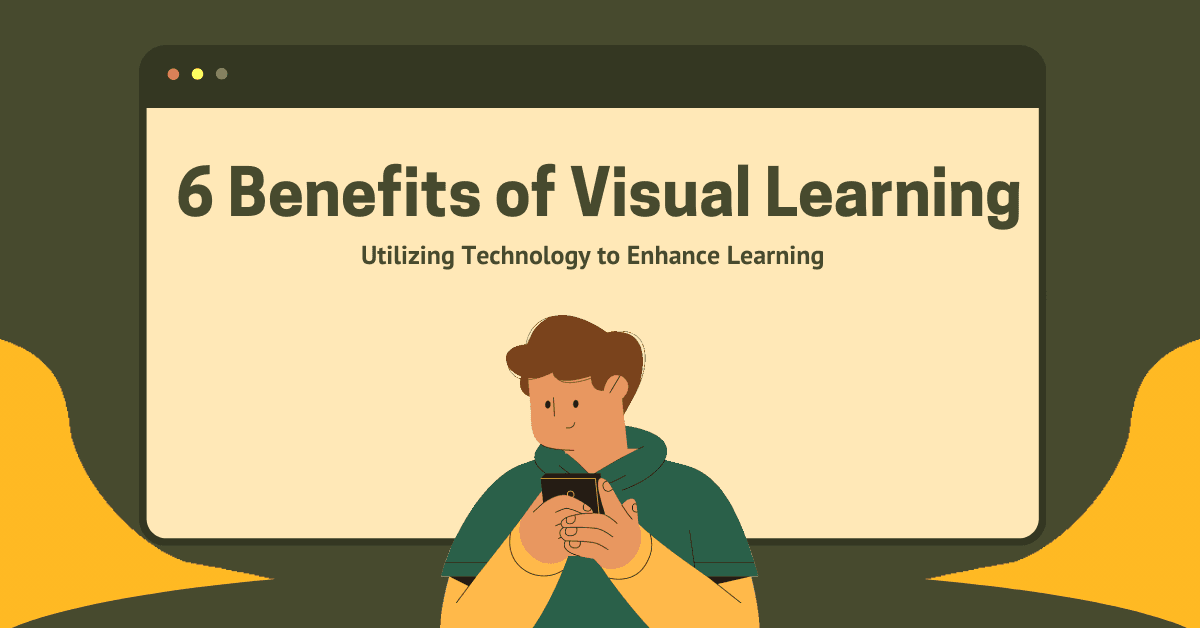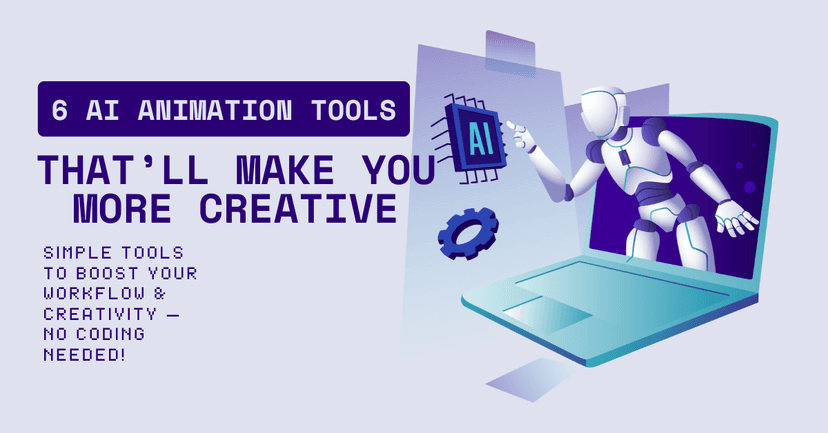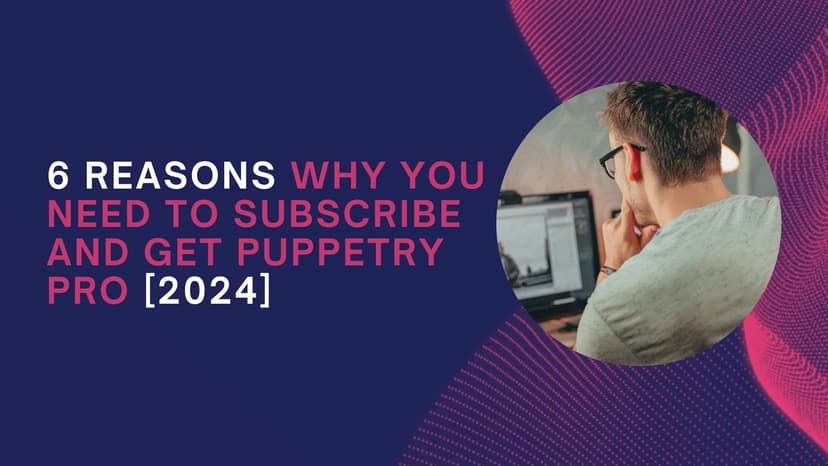
Top 6 Benefits of Visual Learning | An Educator’s Guide 2024
Check out these six benefits of visual learning to appreciate the value of creating thoughtfully planned and dutifully crafted educational videos and images.
Neuroscientists say emotional reactions to colors and shapes are crucial for learning and long-term memory retention.
And that’s why we can recall around 65% of information from an image or video, while we can only remember 10% to 20% of written or spoken material.
Unsurprisingly, learning & development professionals are ditching conventional text and verbal learning resources for visually appealing materials. That’s only the iceberg’s tip.
Check out these six benefits of visual learning to appreciate the value of creating thoughtfully planned and dutifully crafted educational videos and images.
What Is Visual Learning?
Let us clarify a popular misconception before proceeding with the benefits of visual learning.
From the term “visual,” we know that visual learning is the process of accumulating information through the sense of sight.
Unsurprisingly, some folks believe written or text-based learning materials are visual learning tools. After all, we use our eyes to read.
Unfortunately, it’s not. Academicians and learning specialists consider four types of learners: visual, auditory, reading & writing, and kinesthetic.
See? People who learn best by reading conventional text and writing words and phrases aren’t the same as visual learners.
So, what is visual learning, and who are visual learners?**
Visual learning requires processing non-written information, including pictures, diagrams, charts, graphs, and videos.
Learners of this type remember faces, places, and other information better and faster. They process details or elements by picturing them in the brain.
Six Benefits of Visual Learning
We mentioned that visual learners have better knowledge processing and memory retention. Of course, other visual learning benefits exist; we will explore more here.
1. Ensures higher learning quality
Studies show that eLearning videos and other visual materials promote learners' engagement.
Students are more motivated to pursue their studies, allowing them to assimilate, digest, and retain more knowledge than the average learner.
They are also happier, have higher self-esteem, and have positive mental well-being.
Visual learning contributes to higher quality of knowledge acquisition and application. For example, reading several pages of text can be tedious and mentally tiring.
That’s why many students create diagrams and charts or represent critical ideas in symbols to make sense of the concept. Ask them what they learned, and learners will remember the schematics, not the text.
2. Stimulates emotions
Did you know that images have an expressway to the amygdala – the brain part responsible for emotions?
Meanwhile, written words travel to a different section in the frontal lobe.
The direct connection between visual inputs and the brain’s emotional center accounts for the observation that videos are more capable of stirring our emotions.
And here’s the kicker!
Emotions influence memory, attention, critical thinking, decision-making, regulation, executive function, problem-solving, and other cognitive skills. In short, emotions influence how we learn.
It’s like this.
Do you get teary-eyed after watching a sad movie scene faster than reading a sob story in a novel?
It’s the same thing with visual learning. We process visual information more quickly and retain it longer than text.
3. Promotes longer-term and stronger memory
Beginning biochemical students learning the tricarboxylic acid cycle or Kreb’s Cycle often find the concepts too technical and vague.
Now, visualize the steps as images; the whole process makes sense.
During exams, students remember the shapes and colors depicting the TCA cycle’s phases and how they relate to one another better than plain text.
As mentioned, visual information has direct access to the amygdala.
And since the amygdala also houses the control center for cognitive processes, learners retain the information better, more vividly, and longer.
High-quality video e-learning materials enable learners to form more vivid images in the brain. It allows them to store information and retrieve it more quickly than words.
4. Makes learning more fun
While some folks find reading plain words fun, most don’t.
We understand.
Text information must go to the brain's language area before it reaches the amygdala for cognitive processing. In short, words must make a stopover before you can make sense of them.
Moreover, plain text is monotonous, and the brain can tire of reading.
On the other hand, images with bright-colored notes, doodles, pictures, cartoons, and charts offer diversity. It makes learning more fun.
For example, generating a whimsical AI avatar (i.e., cartoonified self-portrait or a talking cat) can make learning more engaging. Learners will be more interested in the topic.
5. Removes language barriers
Did you know that one in ten people have difficulty recognizing some words? Experts say over 780 million people worldwide have dyslexia.
They can read but might not comprehend words and phrases because the word’s meaning gets lost along the way from the eyes to the language and cognitive centers.
Some people might not speak the same language, too.
We have about 300 writing systems and over 7,000 spoken languages.
Even English can have regional variations. For example, Britons call “pants” as underwear, while Americans know them as trousers.
Words can have different meanings depending on several factors. E-learning videos and other visual materials eliminate these barriers and allow students to learn the same concept.
6. More cost-effective
Visual learning doesn’t only benefit students. It can also offer an advantage for teachers, instructors, trainers, and anyone involved in learning and development.
PowerPoint presentations with notes, doodles, flowcharts, and images are perfect for conveying learning points. Digital flashcards are easy to customize, while slides are effortless to annotate.
Online learning videos can be more productive with templates. You can add key elements, highlight valuable passages, and remove distracting or unnecessary components to make teaching and learning more effective.
And since almost everyone has a mobile device, you can share these e-learning video materials anytime, anywhere.
How Do You Describe a Visual Learner?
People have preferences, including how we assimilate and process information to gain knowledge.
Although AI-generated videos and other visual learning resources work with most learners, some might still prefer listening to lectures, performing experiments and tasks, or reading and writing. So, how do you know your students will love your visual learning tools?
Great observers
Visual learners are like Sherlock Holmes. They notice even the minutest detail in their environment. For example, a friend might notice you cut your hair half an inch short. You might remember a street or store from years ago.
They have lightning-quick thinking capabilities.
Did you know the direct connection between the eyes and the amygdala increases information processing by 60,000 times faster than reading text?
Show students a video, and they can draw conclusions and generalizations within seconds. Let learners read a paragraph; they might need a few minutes to understand it.
Excellent in arts
Visual learners have an eye for everything. And it’s more pronounced in the arts. They love drawing, doodling, or sketching.
Visual learners like to use colors to show their emotions, create lines and shapes to immortalize their thoughts, and apply other art elements to convey a message.
Everything boils down to the direct connection between the eye and the amygdala.
Strong visual memory
Thirteen in twenty learners retain information better and longer if the material is an image, video, chart, graph, caricature, sketch, drawing, or other visual information.
Meanwhile, people listening to lectures will only store 10% to 20% of the information.
Reading the same material in plain text decreases the amount of knowledge retained to only 10%.
So, quiz your students about a topic they had a few weeks back. There’s a good chance more learners will ace the test if the material is visual, not text.
How to Motivate and Engage Visual Learners
Visual learning is highly beneficial to learners and teachers. But how can you motivate and engage them more to make their learning experiences worthwhile? Please consider the following tips.
-
Use AI video producers, image generators, puppet creators, and avatar developers to make engaging learning content. You can try Puppetry because it’s easy to use and offers enough customization.
-
Add videos, photographs, cartoons, charts, graphs, sketches, doodles, and other visual learning tools.
-
Consider grouping students according to their learning styles. For example, you could group visual learners to encourage team learning. Other groups can be auditory, kinesthetic, and reading & writing.
-
Although visual learners are quick thinkers, you should give them sufficient time to process information. Help them visualize key concepts by allowing them to “reformulate” the ideas into drawings, diagrams, or sketches.
-
Use colors and other visuals in your lessons. You might want to learn the emotional connection of colors such as red (love, excitement, and passion), blue (peace, reason, wisdom, and hope), and yellow (caution, hope, or joy).
Others are green (nature, freshness, and growth), white (indifference or truth), orange (warmth and kindness), and black (mystery, cold, or noble).
-
Include written instructions or text to visual learning resources. This trick helps learners to revisit concepts, allowing them to tweak visual representations.
Frequently Asked Questions
Can Puppetry benefit visual learners?
Yes, Puppetry is an AI-powered video and image generator that teachers and instructors can use to create stunning and engaging visuals. You don’t need technical skills to run the platform and produce videos, but it does require imagination.
How can I use Puppetry to improve visual learning?
You can create whimsical cartoons to make PowerPoint slides more fun. How about producing a virtual talking head from a favorite anime character, pet, or a self-portrait?
You can generate a digital teacher or instructor and customize it to make the class more interested and attentive to the lesson. Puppetry doesn’t limit your imagination.
Final Thoughts
Although visual learning is more effective than other types, it doesn’t mean teachers and instructors should ditch conventional text-based, auditory, and kinesthetic methods.
Visual learning should be an integral component of a more holistic approach to teaching and learning.
Integrating visuals into plain words, lectures, and demonstrations can make learning more productive for everyone.
Related Articles
Discover more insights and expand your knowledge with these hand-picked articles

Top 6 AI Animation Tools 2025
Gone is the era of toiling (of backbreaking hard work) for weeks (even months) creating animated videos in studios. Today, one can whip up a DreamWorks-worthy clip within minutes, provided you use the right AI animation tools.
![How to Use AI for Coaching in 2024 [+ 6 AI Tools for Coaches]](/_next/image?url=%2Fimages%2Fhow-to-use-ai-for-coaching-I3Mz.png&w=828&q=75)
How to Use AI for Coaching in 2024 [+ 6 AI Tools for Coaches]
Discover how to use AI in your coaching business and leverage its power to scale this year! Read more in this article today!

6 Reasons Why You Need To Subscribe and Get Puppetry Pro in 2024
Puppetry is an AI video generator tool to create talking avatars for your videos. Here are the reasons why you should need to subscribe to Puppetry Pro!
Ready to Create Amazing Content?
Join thousands of creators who use Puppetry to bring their ideas to life. Start creating engaging content today with our AI-powered platform.